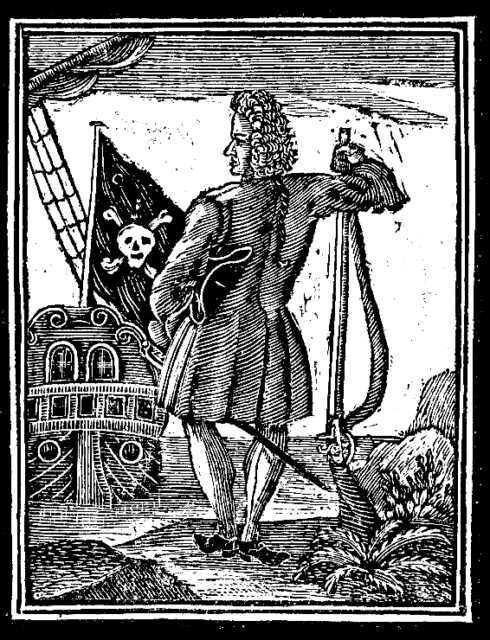A unique pirate who was known as the “Gentleman Pirate” was Major Stede Bonnet, a retired gentleman from the King’s Guards. He was an educated and respected man, living with his wife on a large estate in Barbados. The most commonly accepted reason why he fled to sea to become a pirate was due to his wife’s incessant nagging. He was an unusual pirate indeed.
In 1717, having had enough of the estate life, he purchased a sloop, had it outfitted with ten guns, hired a crew for his ship dubbed the Revenge, and sailed away into pirate history. What he lacked in knowledge of seamanship he had in enthusiasm and leadership. He quickly gained the nickname Gentleman Pirate due to his cultured and privileged background – and because he kept himself well groomed, wearing a periwig and fancy clothing while at sea.

Bonnet sailed his sloop up and down the coasts of Virginia and the Carolinas, managing somehow to plunder ships. His lack of skill and knowledge soon became obvious to his crew, and they weren’t very impressed. Before they could revolt and toss him overboard he had the luck to meet up with another pirate by the name of Blackbeard. They soon became partners, and when Blackbeard realized his keen new partner had very little seafaring or even pirating experience, he convinced Bonnet to give up his command of the Revenge. One of Blackbeard’s lieutenants took over the Revenge and Bonnet moved onto Blackbeard’s ship as a guest, Charleston Pirates reported.
With Blackbeard, Bonnet took part in the siege of Charleston. Pardons were being offered for pirates at this time, and Blackbeard decided the time was ripe to take up the offer and talked Bonnet into doing so as well. It seemed that France and England were at war against Spain; not wanting to return home to his family, Bonnet decided to become a legal privateer, which would let him attack Spanish vessels. Revenge was returned to him but, to his annoyance and anger, Bonnet discovered all the plunder was gone, and all he had was an empty ship. Furious, Bonnet searched for Blackbeard but was unable to find him and never recovered the plunder that he believed was his by right.

Bonnet soon returned to piracy, more successful now due to his time with Blackbeard, and was able to plunder many ships in a few short months. What he didn’t realize, though, was that the area he was now sailing had been plagued by many pirates and the Governor and Council of South Carolina, backed by the people, had had enough – a plan was hatched to rid the area around Charleston from pirates. Two sloops led by Colonel William Rhett sailed the seas and came across three pirate ships anchored at Cape Fear River. Cape Fear River was one of the worse places for Bonnet to be found as his ship kept floundering in the shallow shoals.
Only after five hours of battle did Bonnet raise the white flag in surrender. The captured crew and Bonnet were taken by Rhett back to Charleston for prosecution. Memories ran deep, and the resident remembered the siege of Charleston and Bonnet’s part in it. In a trial lasting only two weeks, the pirates and their activities were examined and judged. There was a lengthy speech by Judge Nicholas Trot about Bonnet and his deeds.
Thirty of the pirates were convicted and sentenced to death; among these was Bonnet. He wrote to the Governor seeking forgiveness, however, nothing came of his letter writing.
Bonnet was hanged at White Point in November 1718, so ending his career as a pirate.
